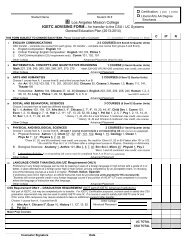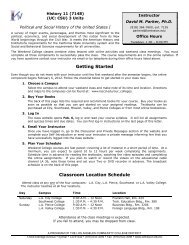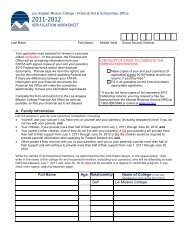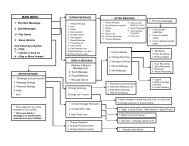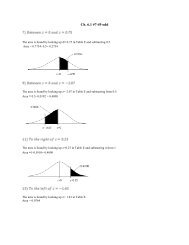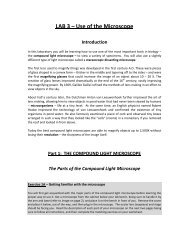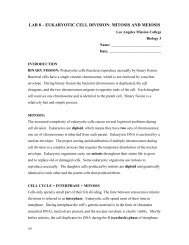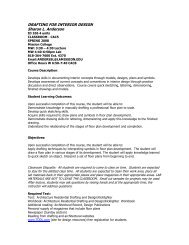You also want an ePaper? Increase the reach of your titles
YUMPU automatically turns print PDFs into web optimized ePapers that Google loves.
Pancreatic enzymes such as lipase, trypsin and amylase normally carry out their catalytic<br />
activities at a relatively neutral pH 7 to pH 8. To test the effect of pH on the activity of such<br />
enzymes, you will test the activity of the enzyme amylase at a variety of pH values…<br />
*Exercise 4 – Effect of pH on amylase activity<br />
In this exercise you will carry out five amylase reactions much like you did in Exercise 3,<br />
however each reaction will occur at a different pH. The control tubes from Exercise 3 can be<br />
used as controls for this experiment. Perform this experiment as described below:<br />
1. label five test tubes 2, 4, 7, 10 & 12 for the pH values you will be testing<br />
2. add 2.5 ml of starch solution to each tube<br />
3. add 1 ml of the corresponding pH buffer to each tube (e.g., add pH 7 buffer to tube 7)<br />
4. add 0.5 ml of 1% amylase solution to each tube<br />
5. mix well and incubate each tube at room temperature for 10 minutes<br />
6. add 2 drops of iodine to each tube and mix<br />
7. record the color of each reaction on your worksheet, and score* each reaction for<br />
amylase activity as indicated below:<br />
0 – no amylase activity (completely dark blue/black)<br />
1 – a little amylase activity (dark but not completely dark blue/black)<br />
2 – significant amylase activity (slightly darkened)<br />
3 – high amylase activity (clear light brown)<br />
8. graph your results (pH vs amylase activity)<br />
* Use the control tubes from Exercise 3 to help you score each reaction. The tube with no<br />
enzyme represents a score of “0”, and the tube with no starch represents a score of “3”.<br />
7



